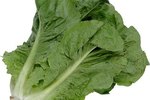Serpae tetras (Hyphessobrycon eques) are often called red minor tetras and blood tetras. These freshwater fish have a red bodies with singular black marks behind the gills, black dorsal fins and black fringe on the anal fins. Serpae tetras come in two varieties -- short-fin and long-fin. With proper care, specimens of either varieties can live up to 5 years.
Put Them in School
Serpae tetras should be kept in schools of at least five or more serpae tetras to help curb aggressive tendencies. Serpaes are known to be fin nippers; they can become aggressive to other fish during feeding. The serpae tetra can be housed in a community aquarium, but you want to avoid including slow-moving fish and fish with long fins, such as guppies, gouramis and bettas. Serpaes do best with other fast-moving fish.
Pick the Right Size
You don't want to house tetras in a fish bowl, as they need a filter. Stick with a glass or acrylic aquarium. When picking out your aquarium, remember that the larger the aquarium, the better; the general rule is at least 1 gallon of water per 1 inch of fish. Long-fin serpae tetras average about 1.5 inches long, so for a school of five fish, you need an aquarium of at least 7.5 gallons.
Decorate With Lots of Plants
Serpae tetras are native to the South America in the Amazon river basin, the Guaporé River and the Paraguay River, where they live in densely planted water with plenty of shade against the sunlight. They prefer the middle and upper levels of the water, hiding amongst aquatic plants -- so the most important feature of their captive habitat is lots of plant life. You can create different levels in the aquarium by using planted foliage of assorted heights. You can also use floating plants to create shade for the tetra. Live plants help maintain healthy water, but you can use artificial plants when decorating the aquarium. Driftwood and other aquarium decor can be added around the edges of the tank to create more caves for hiding. Set the aquarium up with a submersible water heater and a thermometer to ensure that the water is maintained between 72 and 79 degrees Fahrenheit.
Create the Menu
In the wild, serpae tetras eat mostly worms, crustaceans and plants. When in captivity, they will eat just about anything to include fish flakes, frozen food, freeze-dried food and live food. It's ideal to feed long find serpae tetras a varied diet to ensure proper nutrition and health. Offer brine shrimp, bloodworms, mysis shrimp, daphnia, as well as plankton, algae and fish flakes.




